In the analysis and design of control systems, one inevitably faces some level of uncertainty. Uncertainties can be informational: one or more variables describing the dynamics of a system turn out to be unmeasurable, or the variables are measured with errors. Another type of uncertainties is parametric uncertainties, which occur due to the fact that the parameters of a system are not precisely known. As a rule, both types of uncertainty arise in applications.
Because of an inevitable presence of informational uncertainties, a researcher can only estimate the unknown variables of a dynamic system with some accuracy. This accuracy depends on the properties of the system, primary sensors and data processing algorithms used.
Relevance and problem description
The topics of the course “Mathematical Models of Uncertain Systems” have a close connection with control theory. At many universities, they are studied as a module of control theory. Therefore, many topics can be found in monographs, e.g., written by G.A. Leonov, A.I. Egorov and V.N. Afanas’ev [1, 2, 3]. There are also parts of monographs, for example, publication DW. Gu, P.H. Petkov, M.M. Konstantinov [4] and papers, for example, L. Uusitalo, A. Lehikoinen, H. Myrberg [5].
At our university, these topics are studied within a separate discipline. Unfortunately, the information in the books seems to be scattered, hardly covering even a half of this course. In addition, students have inconvenience while extracting necessary theory from different sources. It would be much better if all the material was included into one teaching aid.
The goal of this work is to provide students of the department with teaching materials on this discipline, helping them to master the course “Mathematical Models of Uncertain Systems.” The goal can be achieved by adopting an e-tutorial on this course into the educational process.
Thus, the problem is to develop an e-tutorial “Mathematical Models of Uncertain Systems” using the functionality of HTML, CSS and JavaScript, and also to adopt it into the educational process.
This electronic teaching aid should include
– theory on the course “Mathematical Models of Uncertain Systems”;
– laboratories on 5 topics;
– a testing system.
Each laboratory should contain
– a brief theory on a given topic;
– step-by-step instructions for completing laboratories;
– necessary background information;
– materials for checking the correctness of completed laboratories, by variants;
– a typical report.
Requirements and recommendations on the development of electronic teaching aids
The rapid progress of information and communication technologies and the widespread use of the Internet have led to qualitative changes in the teaching technologies adopted around the world. Today, the most popular form of education is mixed teaching, in which the usual educational process is supplemented by computer-aided learning.
Consequently, computers and computer-based electronic resources have a major role in modern education. The ability to effectively use information resources is of particular importance for making success in an educational process.
As is believed, electronic teaching aids have brought a number of advantages to an educational process from the student’s point of view, such as
– instant access to content in a few clicks;
– the ability to use dynamic interactive material, which considerably facilitates learning.
In order to achieve a positive effect, one should adhere to the basic principles and recommendations on the development of teaching aids as follows.
– The basic requirement is conciseness: the size of each web page should ideally not exceed the limit of 80–100 Kbs, including graphics (optimally, 40–50 Kbs).
– Particular attention should be paid to the optimal speed of presentation, which would not exceed the cognitive capabilities of a student, but at the same time would be sufficient for maintaining his/her activity at a high level. With an increase in the learning rate, the effect of activating passive memorization will be observed.
– In the text, the use of abbreviations, new words as well as long words should be minimized. As was indicated by experimental studies, the difficulty of understanding increases in the case of choosing words with more than 3 syllables [6, р. 59].
– When designing the structure of electronic textbooks and tutorials, the materials should be divided into separate modules taking into account the famous Yngve–Miller number: the speed of short-term memory is (7 ± 2) unrelated numbers or words. This fact was established by the American scientists, linguist V.H. Yngwe and psychologist G.A. Miller.
– All most important information should be placed in the upper left corner of a web page, making it available without scrolling.
– Tables and bulleted lists should be used to present material in a well-structured and compact form.
– Concise headlines should be chosen [7].
– Each idea should be explained in a separate paragraph of text.
– The core of a paragraph should be placed in its first or last line.
– Labels should be located as close to the illustrations as possible.
– Electronic teaching aids should be accessible to all readers, regardless of the browser, platform or display they use [6, p. 60].
– A teaching aid should have a main web page on which the key stages of leaning are presented. Note that this recommendation was suggested in the middle of the 17th century by Czech educator Jan Amos Komensky [8, p. 417]; see Table below.
Structure of e-tutorial “Mathematical Models of Uncertain Systems”
The structural diagram of the e-tutorial “Mathematical Models of Uncertain Systems” is presented in Fig. 1.
The module of theory provides all necessary material on this course for a successful completion of laboratories. Full and reduced order observers, mean-square error minimization, the Kalman filter and stochastic optimal control of discrete-time systems are considered.
In the module of laboratories, goals are described and exercises are given on which a student can master the material.
In the testing module, student’s knowledge is checked and his/her level of assimilation of the material is assessed.
In the module of informational resources, students and tutors can find additional information on a given topic.
The e-tutorial is a fairly compact software product containing important, accurate and well-structured information. Using this teaching aid, students will be introduced to the basic knowledge on the course.
Block quote
|
|
J.A. Komensky believed that no big book should be produced without an index, because “a book without an index is like a house without windows, a body without eyes, or property without an inventory: it is not so easy to use them.” |
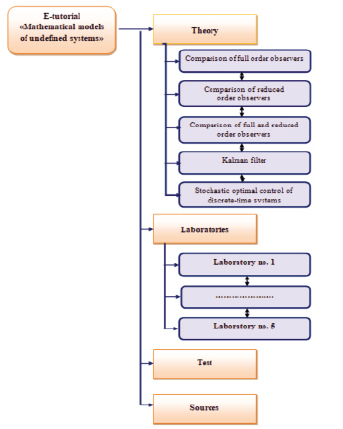
Fig. 1. Structural diagram of e-tutorial
Main stages of operation of e-tutorial
In this subsection, the main stages of operation of the e-tutorial are described in the form of a flowchart; see Fig. 2.
At the initial stage, students become acquainted with the structure of the e-tutorial and also with the basic materials on the discipline. At this stage, students have to study all theory in order to proceed to the next stage.
At the practical stage, which is most important, students have to complete laboratories. Also this is the most difficult stage, because students need to apply some key skills such as collaboration, critical thinking and communication. As was noted by B. Pasik-Duncan, T. Duncan, D. Van Roeken, G. Loera and other authors, these skills are path to success in educational activities [9-11].
Students will develop their skills of collaboration and communication by completing laboratories in a team or by discussing major issues on a given topic. Students will develop their critical thinking by searching for acceptable solutions to current problems.
At the final stage, the student’s knowledge of the material is assessed using a testing system. Based on this test, tutors will put corresponding marks to students.
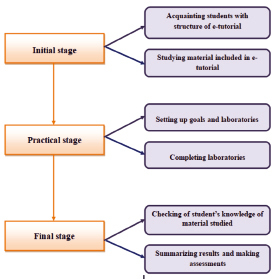
Fig. 2. Main stages of operation of e-tutorial
Implementation of e-tutorial: some features
The home page of the e-tutorial “Mathematical Models of Uncertain Systems” contains the Start button, which is intended to run the main functionality of the software product.
Clicking this button, a student gets to the page of the informational module. In this module, a student can find all theoretical material required to study the course “Mathematical Models of Uncertain Systems” as well as to complete the laboratories. Detailed information on each topic is well-structured, which will help a student to easily pass the final test.
Each module has a horizontal menu located at the top, as is illustrated in Fig. 3. Each element of a horizontal menu has a pop-down menu with the topics covered by it.
In the left upper corner of this web page, there is a button associated with a sidebar menu (Fig. 4) for passing from the informational module (Theory) to the practical module (Laboratories) or the testing module (Test). The sidebar menu is located to the left of the main content in accordance with the generally accepted approach to web site design.
For complying with the principle of historicism, special references were created to the researchers mentioned in the e-tutorial. Clicking an appropriate link, a student can get detailed information about each of them.
This contributes to the general development of students and also consolidates the material presented: it is important to know the major achievements of a researcher whose equations and theorems are included in the e-tutorial.
The practical module is a set of laboratories on 5 different topics. Each laboratory includes a detailed description of its completion with diagrams and also a typical report. Consider laboratory no. 1 as an example.
The goal of this laboratory is to estimate the state of a system. To do this, a student has to solve the system, compile a Simulink model of the system and its observer in the form of a general feedback model and then choose a polynomial with a highest rate of convergence of the estimation error. This laboratory contains 3 parts: problem statement, simulation and typical report. For faster navigation, these parts are displayed using a pop-down menu.
The guidelines for laboratories are organized with another feature as follows. If a student stays on the same web page for a long time, most likely he/she has difficulty with completing a corresponding laboratory and needs assistance. The Help button (Fig. 5), developed in the prototype-based programming language JavaScript, will appear in the upper right corner if a student stays on the same web page for more than 30 minutes.
Clicking this button, a student opens a new web page with the correct system diagram and result, as is shown in Fig. 8. They cannot be copied or pasted into the report; a student just compares his/her result with the correct counterpart. Thus, seeking for his/her mistakes, a student will better understand the theoretical material and finally complete the laboratory.
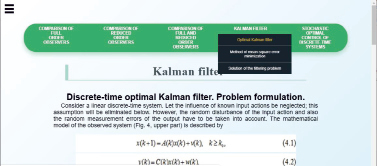
Fig. 3. Pop-down menu in informational module of e-tutorial “Mathematical Models of Uncertain Systems”
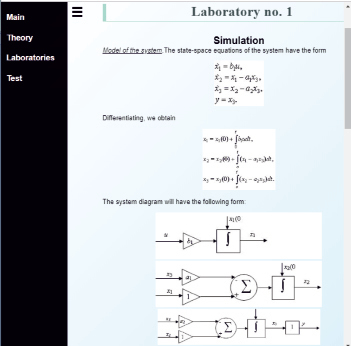
Fig. 4. Sidebar menu of e-tutorial “Mathematical Models of Uncertain Systems”
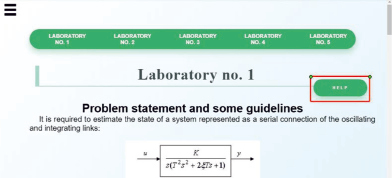
Fig. 5. Appearance of Help button
The test involves a technology with authorization and random sampling of questions from a general population. The testing program was written in JavaScript. The test database contains 25 questions, 7 of which are offered to a student via random sampling. Note that multiple-choice questions are used in the testing system: a student has to choose a correct answer from several available options.
After passing the test, the test result and the words of support are displayed in a pop-up window. There are many aphorisms, proverbs and sayings of famous and authoritative people about negative experience and possible failures [12]. Here are some of them.
– “The only man who makes no mistakes is the man who never does anything.” (T. Roosevelt).
– “Success is the ability to go from one failure to another with no loss of enthusiasm.” (W. Churchill).
– “Experience is what you get when you didn’t get what you wanted.” (R. Pausch).
Thus, a friendly response of the e-tutorial in case of mistakes will give psychological support to a student.
Conclusions
To conduct classes on the course “Mathematical Models of Uncertain Systems,” an e-tutorial has been developed and adopted into the educational process. It is based on materials from the textbook of leading tutors J.P. Emelyanova and P.V. Pakshin [13].
The web pages of the e-tutorial have been developed and formatted using HTML and CSS. In addition, a rich functionality of the object-oriented language JavaScript has been used.
The e-tutorial consists of 30 HTML files, 1 CSS file and 1 JavaScript file. All laboratories have been implemented in MATLAB/SIMULINK.
Distinctive features of this teaching aid include (1) the Help menu appearing after a 30-min inactivity period while completing a laboratory, (2) a testing system with random sampling of multiple-choice questions from a database and (3) a friendly response to the mistakes made during the test. The developed software product can be used in laboratories and practical classes for undergraduate students specializing in applied mathematics as well as in their independent study.
Currently, this teaching aid is being reconfigured for Android devices.


